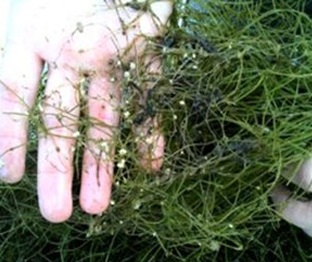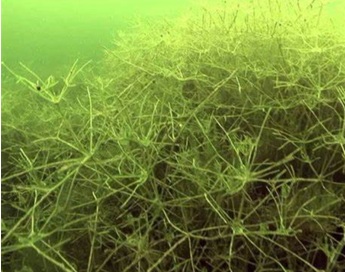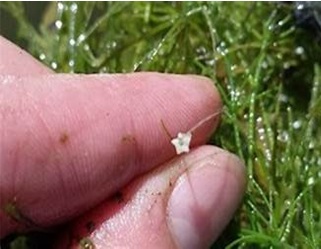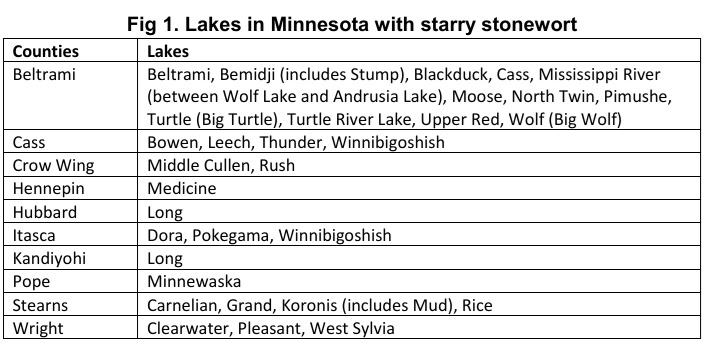White Bear Lake Conservation District Starry Stonewort (SSW) Prevention Plan
We need your help to prevent SSW from entering WBL
The White Bear Lake Conservation District (WBLCD) has created a plan to prevent and monitor for SSW which includes boat ramp inspections, public education and monthly surveys of public ramps from July to September. In addition, the WBLCD is working with the MN Department of Natural Resources, Ramsey County and the Washington Conservation District to share surveying resources and information. Public help is also needed.
How You Can Help Monitor for and Prevent Introducing SSW into White Bear Lake
 Your role is critical in monitoring for SSW: Check, Snap, Send.
Your role is critical in monitoring for SSW: Check, Snap, Send.
- Check the water around your dock, lift and swimming area regularly for SSW.
- Bright green (almost fluorescent), stringy algae that has little star shaped bulbs
- Grows in shallow water (2-5 feet), often around docks and lifts
- Feels crunchy or coarse when pulled out of the water
- Snap a photo if you find something suspicious
- Send the photo to the White Bear Lake Conservation District at This email address is being protected from spambots. You need JavaScript enabled to view it.
Prevent accidently introducing SSW into WBL: Clean-In, Clean-Out for boats, docks and lifts:
- Remove all visible plants, algae, mud and debris
- Drain water from bilges, motor, live wells and bait containers and remove plugs
- Dry everything for at least 5 days before launching into White Bear Lake
- Dispose of all bait
- Inspect and clean docks, rafts, and boat lifts if you are moving from another lake and wait 21 days to install into WBL
How to Identify Starry Stonewort Nitellopsis obtuse
Starry Stonewort (SSW) is a very aggressive plant-like form of algae that grows in freshwater lakes with high calcium and moderate to good water quality with silty type sand and open sandy areas. Unlike algae you find floating in lakes, starry stonewort is large, anchored to the bottom of lakes, and resembles common aquatic plants.
 It produces a dense mat of biomass
It produces a dense mat of biomass
that can fill the water column and
out-produce native plants and fill in
fish spawning areas. It grows in 1 to 15 ft
of water but is densest in 2 to 5 ft of water.
 Along with reproducing from fragments,
Along with reproducing from fragments,
it has a white star-shaped bulbils that
gives it its name. This white star can
also grow new plants.
It is typically located at boat launches or open areas around docks. It has been found in 31 lakes in Minnesota with 29 of those sites at boat launches (see Fig.1). SSW spreads from fragments off boats, boat trailers and sediment on anchors.
The 2024 WBLCD Lake Use Study found that 1.3% of boats launched (on days the boat launches were monitored) came from a lake that was infested with SSW.
White Bear Lake, at this time, has no known infestation of SSW, though it is suggested that it would grow well in the Lake.

Other Resources
- Starry Stonewort Fact Sheet – MN Department of Natural Resources
- MN Aquatic Invasive Species Research Center (University of MN)
